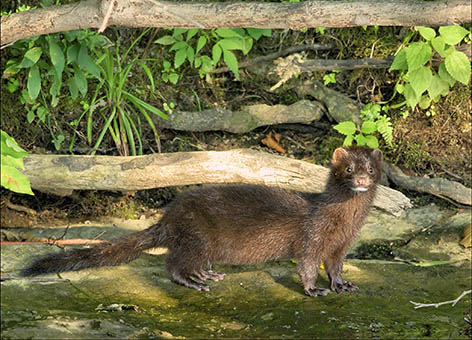Mink numbers low in PCB-laden Hudson River, study finds
November 2, 2018
This week the U.S Fish and Wildlife Service (USFWS), NOAA’s co-trustee on the Hudson River hazardous waste site, issued a press release and fact sheet about a new study on mink. The study found that the mink populations are reduced along the Hudson River, which is contaminated with high levels of polychlorinated biphenyls (PCBs).
Mink are cat-sized semi-aquatic mammals known for their soft fur. They are exposed to high levels of these toxic chemicals through contaminated water and soil, and through preying on contaminated fish, invertebrates and animals.
In a new multi-year study commissioned by the Hudson River Natural Resource Trustees, researchers used scat-detecting dogs to locate mink scat. Conservation Canines trained the dogs specifically to track and alert researchers to mink feces. Over the course of the study the dogs located thousands of samples.
Researchers identified individual mink by examining scat for unique DNA “fingerprints”. With this information researchers were able to calculate the overall mink population density.
They found that the Hudson River had had around 40% less mink population density than the Mohawk River study area. The Mohawk River was a good comparison for this study because it has similar habitats, but has much lower PCB levels than the Hudson.
The study is the latest demonstration of the Trustees’ documentation of natural resource injuries from PCBs in the Hudson River. It is an excellent example of trustees employing innovative methods to study the health of these important river ecosystems.
Learn more about the Hudson River natural resource damage assessment.






